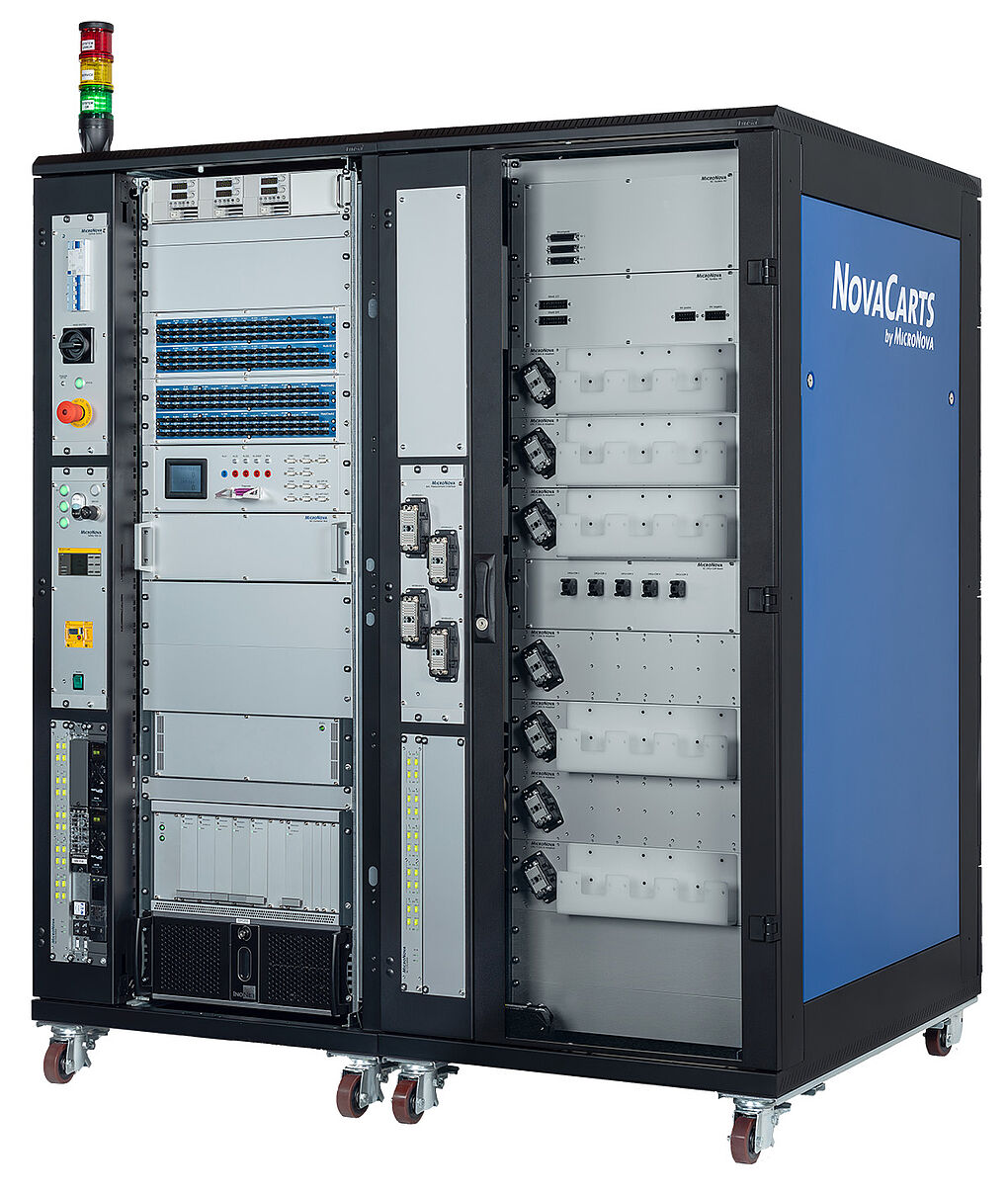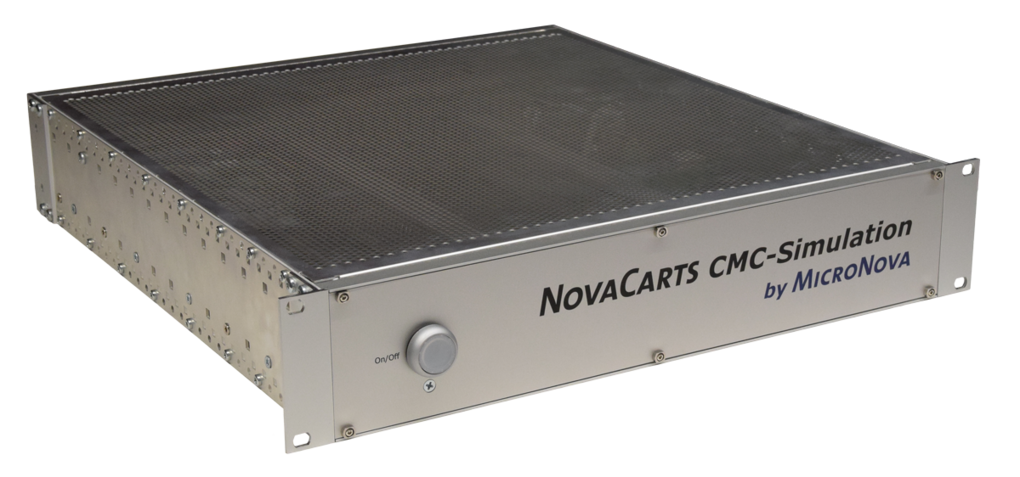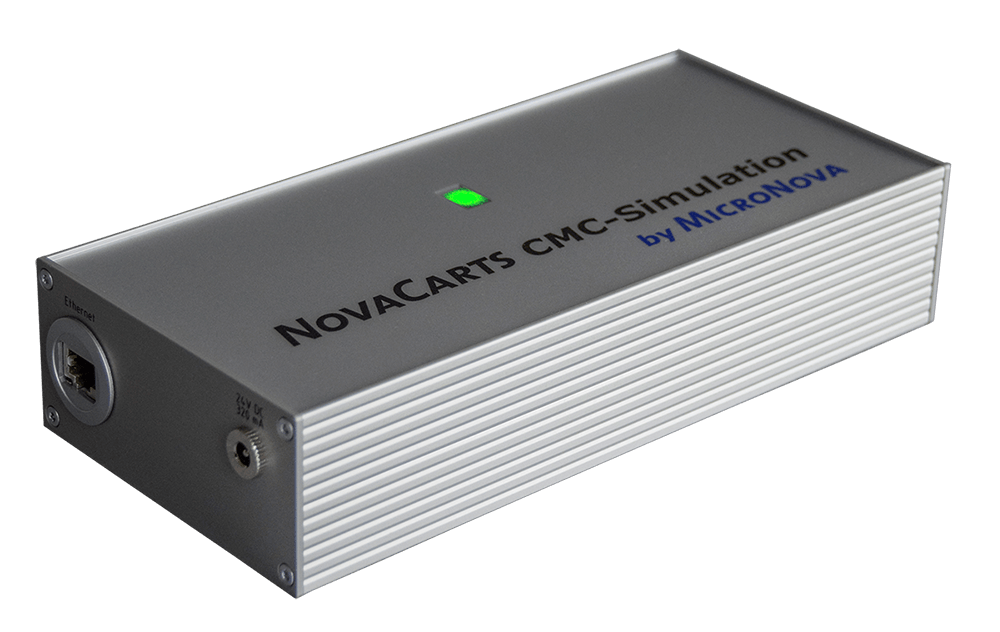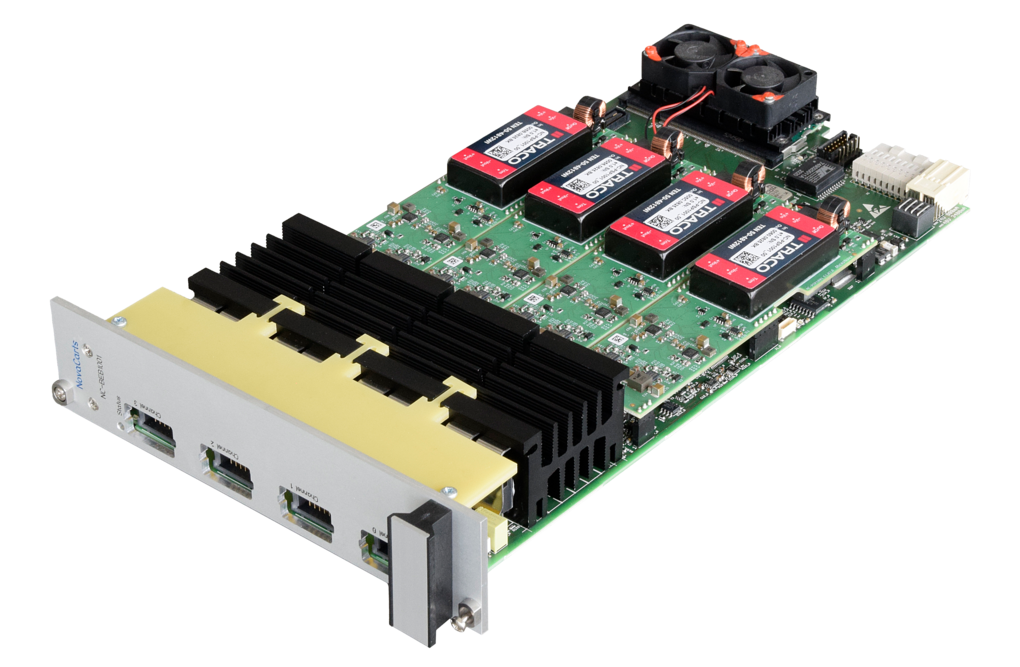NovaCarts Battery represents one of the most powerful and precise cell simulation systems on the market. This is leveraged by the modular and scalable hardware in the loop (HiL) system to create optimum conditions for developing new battery management functions such as state-of-charge (SoC) and state-of-health (SoH) controls, active cell balancing and electrochemical impedance spectroscopy.
NovaCarts Battery is ideal for all lithium-based batteries, including solid-state and starter types, and can also be extended to cover future battery technologies very cost-effectively via firmware update –ideal conditions for testing current and future battery management systems.
Further Information
- NovaCarts Hybrid Test Systems
- Reference ElringKlinger: BMS test on HiL system with cell controller simulation
5 reasons to use the NovaCarts Battery
- Extremely versatile: One HiL system for complete and extensive BMS tests for all lithium-based batteries, including solid-state batteries and starter types
- Sustainable: NovaCarts Battery can be swiftly and easily customized for future applications via firmware update (e.g. new battery technologies and battery management functions)
- Low-cost customization: The parameters and controls used for cell simulation can be modified directly in the software – eliminating the need for costly hardware replacements
- High scalability: A modular design and numerous enhancement options allow the system to be adapted to various test requirements (e.g. low-voltage / high-voltage batteries, power emulation / powerless simulation)
- Shorter commissioning and changeover times: New NovaCarts Battery HiL systems and new NovaCarts components can be swiftly and easily configured thanks to the use of the same tool chain
Features
- All-digital cell simulation thanks to powerful field programmable gate arrays (FPGAs) on the NovaCarts cell simulation board
- High-precision representation of current steps and voltage drops
- Software-controlled internal resistance of cells can be modified swiftly and in real-time to simulate e.g. lithium-ion solid-state batteries
- The open and powerful model platform with cycle times starting from a few microseconds and highly dynamic I/O allows new BMS algorithms to be developed (e.g. state-of-health (SoH), state-of-charge (SoC), electrochemical impedance spectroscopy)
- Significantly more accurate calculation of the current battery status thanks to an electrochemical simulation model
- Exact reproduction of dynamic cell behavior in the start-up process thanks to a high update rate of up to 10 kilohertz
- The ability to simulate capacitive and inductive balancing mechanisms allows BMS to be validated with active and passive cell balancing
- High-voltage power emulation (up to 1,000 volts) enables tests with a final power output stage. Measurements on the system are possible thanks to an intelligent safety concept.
- Can be used with real elements / dummy loads and rest-bus simulation
- High-resolution shunt simulation (16 bit)
- High signal quality thanks to short and stable connections to the control unit and direct to output for associated error simulation
- Resistance simulation for reproducing temperature sensors with negative or positive temperature coefficients (NTCs and PTCs)
- Special modules available for the simulation of intermediate circuit capacities and insulation faults
NovaCarts CMC Simulator
Safe operation of lithium-ion batteries requires continuous monitoring of the cell voltage and temperature of the individual battery cells. This task is performed by cell module controllers (CMC), also known as cell sensor circuits (CSC) or cell supervision electronics (CSE). Each battery cell is connected to such a monitoring module, i.e. a CMC. CMCs constantly measure the voltage and temperature of the cells and pass this information on to the battery management system (BMS).
NovaCarts CMC Simulator allows the simulation of multiple battery monitors. It is built on an FPGA-based hardware solution that can be used both on the HiL system and as a desktop application. This approach allows validation tests for BMS to run at a very early stage, since no real CMC components are required. Moreover, CMCs from different manufacturers can be easily tested in combination with the BMS – without significant changeover and downtime or conversion costs. In addition, the fact that CMC simulation on the HiL system can be easily combined with real CMCs reduces the cost of the test bench. As a result, the solution forms the ideal extension of HiL test benches for battery management systems.
Further Information
- Datasheet: NovaCarts CMC Simulator
- Reference ElringKlinger: BMS Testing on a HiL System Using Cell Controller Simulation
HIL Simulation with Integrated EIS Capability for Precise Battery System Testing
By simulating electrical impedance spectra in the NovaCarts Battery HIL simulators, MicroNova expands the capabilities of battery simulation. This enables Electrochemical Impedance Spectroscopy (EIS) to be simulated for control units (ECUs): aging effects, states of charge, and temperature dependencies can be represented realistically—an essential foundation for precise development and validation of modern Battery Management Systems (BMS). Algorithms for State of Charge (SoC) and State of Health (SoH) estimation, as well as determining power capability (State of Function, SoF), can be tested under reproducible conditions—without costly, time‑consuming, or potentially hazardous experiments on real cells. For users, this means greater safety when implementing new functions, faster time‑to‑market, and significantly higher reliability of the developed systems; unlike previous approaches, it eliminates the labor‑intensive dependence on hard‑to‑reproduce tests with real battery cells.
The method developed by MicroNova and Fraunhofer IEE is fully integrated into the HIL simulators and extends them with real‑time capable EIS simulation—more precisely, HIL simulation with integrated EIS functionality. Existing NovaCarts HIL simulators can be easily retrofitted by replacing cell simulation cards—protecting your existing investments. FPGA‑based signal processing and hybrid modeling enable unprecedented accuracy and speed when reproducing battery behavior. This not only enables the development of innovative diagnostic and prognostic functions for BMS, but also extends battery lifespan and optimizes charging processes. Customers benefit from shorter development cycles, reduced test costs, and a clear competitive advantage through safe, durable, high‑performance battery systems; by comparison, such results are difficult to reproduce consistently with real battery cells.






